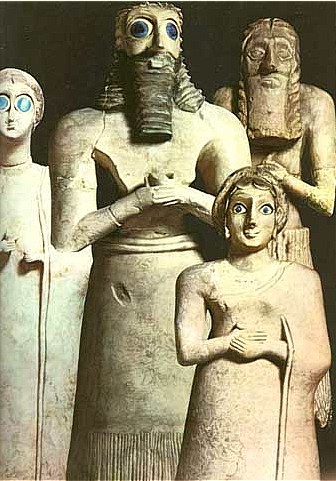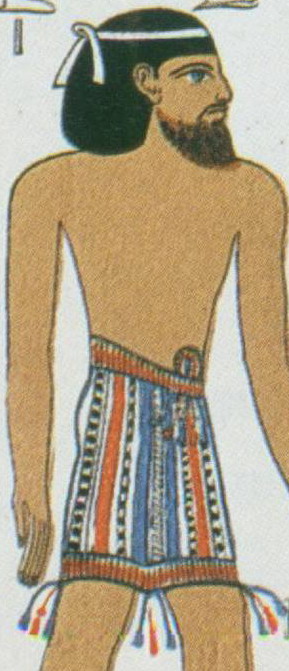Physical appearance of Jesus
The true physical appearance of Jesus, with analysed Bible passages and descriptions from other sources.
Physical descriptions of Jesus in the Bible
We must firstly note that the physical description of Jesus in the Book of Revelation, is of Jesus in ''Heavenly form'' and is from a vision (the entire nature of Revelation is outlined in 1: 1). This leads us to an immediate question, according to scripture what do people in Heaven look like?
We are told Angels in Heaven in both the Bible and apocrypha have a light countanance, meaning light skin or appearence (Matthew 28: 3 calls the ιδεα = countanance of angels like αστραπη = ''lightning''):
''...countenance was like lightning, and his raiment white as snow'', this is also repeated in Revelation 10: 1-3 where an Angel is described as having a face like the sun (ἥλιος = radiant/light), Angels are also described as wearing white garments which shone light (Luke 24: 4; John 20: 12; Matthew 28: 3; Revelation 15: 6). The entire appearence of an Angel, according to the Bible is therefore white, radiant or like ''lightning'', and this includes their skin complexion (ιδεα = countanance, see Matthew 28: 3). In apocrypha it is also added, that many Angels also have light coloured eyes (2 Enoch).
However according to the Bible, people don't become Angels after death, Angels are not glorified Human beings, and the Bible makes clear distinctions between Angels and Humans in Heaven (Matthew 22: 30; Hebrews 12: 22-23). How then do Humans appear then in Heaven according to the Bible? We are told the most on this issue in 1 Corinthians, 15. Paul states Heavenly bodies will be different from the natural bodies of Humans, the latter are characterized by mortality (being susceptible to death), but Heavenly bodies will be characterized by immortality (not susceptible to death). They are then of a completely different form and substance, however they are still physical (Luke 24: 37-43) but have different powers (John 20: 19).
Our best clue to how people will appear in Heaven is in Philippians 3:21, which says in Heaven, the bodies of Humans will be conformed to Jesus' glorious body (this is also stated in 1 John 3: 2). So how is Jesus' physically described in the Bible? His Heavenly form is detailed in Revelation 1: 14, therefore in conclusion this passage details his appearance, so let's look at it.
Revelation 1: 13-16 (KJV)
''There was someone like the Son of Man among the lamp stands. He was wearing a robe that reached his feet. He wore a gold belt around his waist. His head and his hairs were white like wool, as white as snow; and his eyes were as a flame of fire. And his feet like unto fine brass, as if they burned in a furnace; and his voice as the sound of many waters. And he had in his right hand seven stars: and out of his mouth went a sharp twoedged sword: and his countenance was as the sun shineth in his strength.''
We may first note, Revelation 1: 14 of this passage:
''His head and his hairs were white like wool, as white as snow; and his eyes were as a flame of fire''
This appears in Greek as follows:
''ὁ δέ κεφαλή αὐτός καί ὁ θρίξ λευκός ὡς ἔριον λευκός ὡς χιών καί ὁ ὀφθαλμός αὐτός ὡς φλόξ πῦρ''
Of interest is κεφαλη -
kephale (kef-al-ay'): meaning the head, literally -- head.
Strong's Hebrew Dictionary # 2776 defines kephale:
''the head, both of men and often of animals''
Without doubt or dispute, it is therefore clear in this passage Jesus' head (κεφαλη

is described as white (Greek: λευκαι, leukos).
We are also informed of the whiteness of his hair (τριχες

. Note though, that both head and hair is written seperately. Afrocentrics try to twist this passage to exclude the mention of Jesus' ''white head'' and only maintain focus on white hair. Of course, some negroes in old age have white hair (as do whites and other races), but negroes can't have ''white heads''. This passage is undesputable, and states Jesus' head (kephale) was white
and his hair, not only his hair. Afrocentrics try to twist the mention of wool, to imply Jesus had some kind of afro. Yet Revelation 1: 14 does not say Jesus' hair was like wool, only the
whiteness, nothing to do with hair texture.
We therefore simply conclude from Revelation 1: 14, that Jesus had a white head, meaning a white skinned face, and white hair. We also may note the mention of Jesus' eyes as a ''flame of fire'' (φλοξ, πυρος

meaning a light colour.
Revelation 1: 15:
''And his feet like unto fine brass, as if they burned in a furnace; and his voice as the sound of many waters''
This appears in Greek as follows:
''καί ὁ πούς αὐτός ὅμοιος χαλκολίβανον ὡς ἐν κάμινος πυρόω καί ὁ φωνή αὐτός ὡς φωνή ὕδωρ πολύς''
Here the feet of Jesus are stated as being like brass. The Greek word translated as brass, is χαλκολιβανω (
chalkolibanon),
Strong's Hebrew Dictionary #5474:
''Neuter of a compound of chalkos and libanos (in the implied mean of whiteness or brilliancy); burnished copper, an alloy of copper (or gold) and silver having a brilliant lustre -- fine brass.''
Chalkos/χαλκός #5475: copper or bronze. We are therefore informed Jesus' feet were the colour of glowing fine brass (glowing/light since they are compared to a burning furnace) the colour of his feet were thus a radiant light brown-reddish colour. Afrocentrics of course latch onto this description, but as we have already proven Jesus' head was white skinned, so Jesus was not dark. Strong under #5474 understood chakolibanon in relation to implied ''whiteness' or brilliancy - which is the related context here, since the brass is related to a burning, light or glowing effect - certianly not the skin colour of a dark pigment, but a light colour.
In Revelation 1: 16 (KJV), we are provided with more evidence of Jesus' whiteness:
''
And he had in his right hand seven stars: and out of his mouth went a sharp twoedged sword: and his countenance was as the sun shineth in his strength.''
This appears in Greek as follows:
καὶ ἔχων ἐν τῇ δεξιᾷ χειρὶ αὐτοῦ ἀστέρας ἑπτὰ καὶ ἐκ τοῦ στόματος αὐτοῦ ῥομφαία δίστομος ὀξεῖα ἐκπορευομένη καὶ ἡ ὄψις αὐτοῦ ὡς ὁ ἥλιος φαίνει ἐν τῇ δυνάμει αὐτοῦ.
ἥλιος ēlios = sun
φαίνει phainei = shining
Only does light skin shine, not dark. It is therefore easily to conclude that Revelation 1: 13-16 which describes Jesus physically, describes Jesus' white skinned head, white hair and radiant/glowing feet and a overall light shining countanance. In Matthew 17: 1-2 we are also provided with something similar:
''After six days Jesus taketh Peter, James, and John his brother, and bringeth them up into an high mountain apart, And was transfigured before them: and his face did shine as the sun, and his raiment was white as the light.''
Again here Jesus is related and described as light/shining, such descriptions are only attributle to pale white skin, since dark skin does not shine or have anything radiant or light about it.
Continued below...



